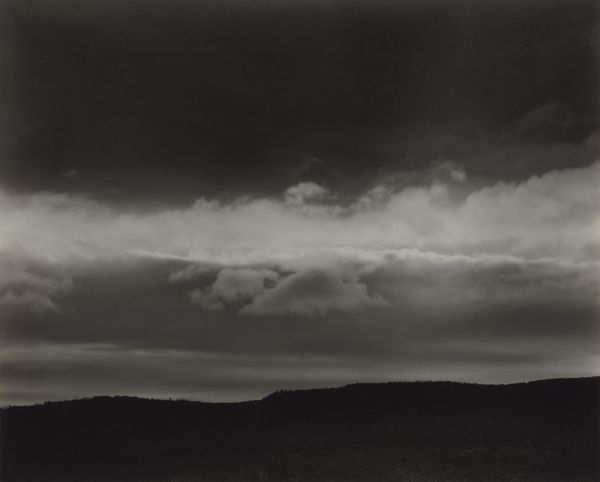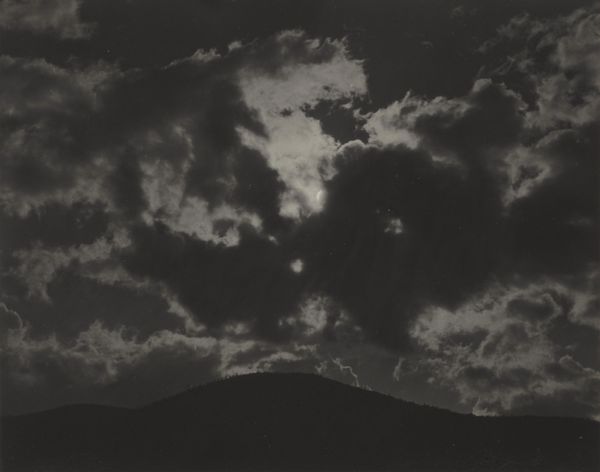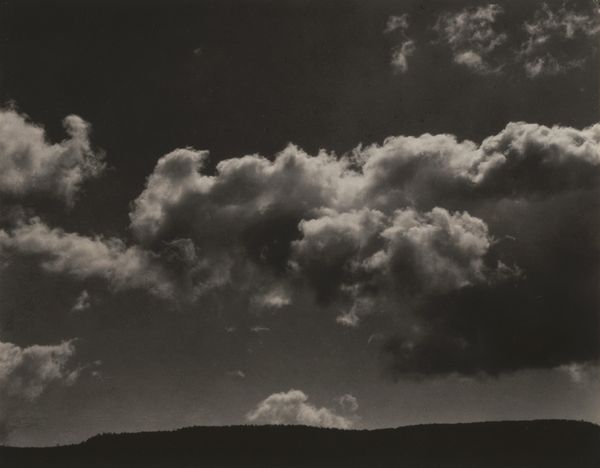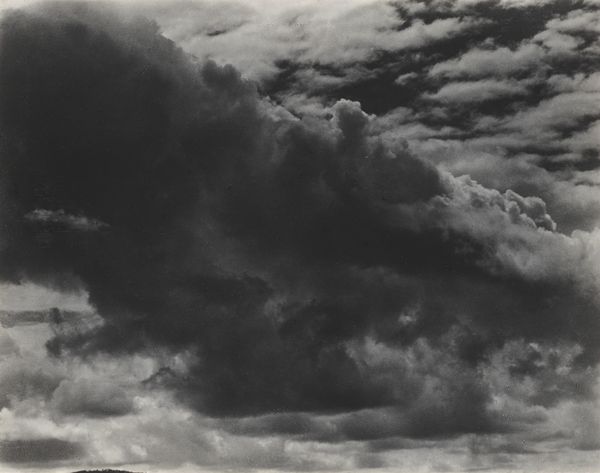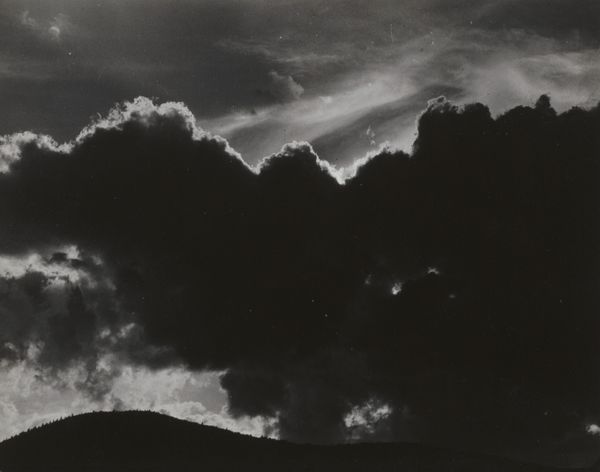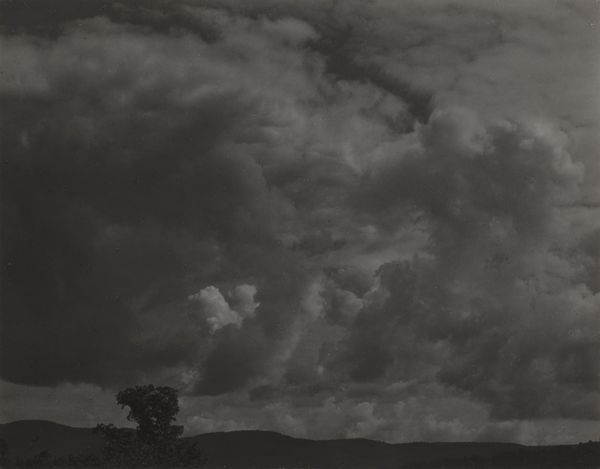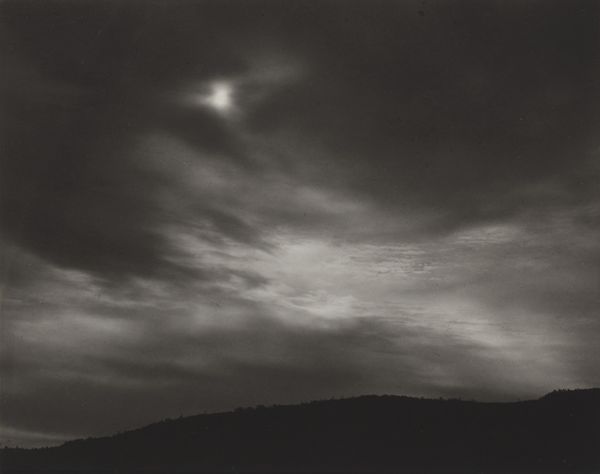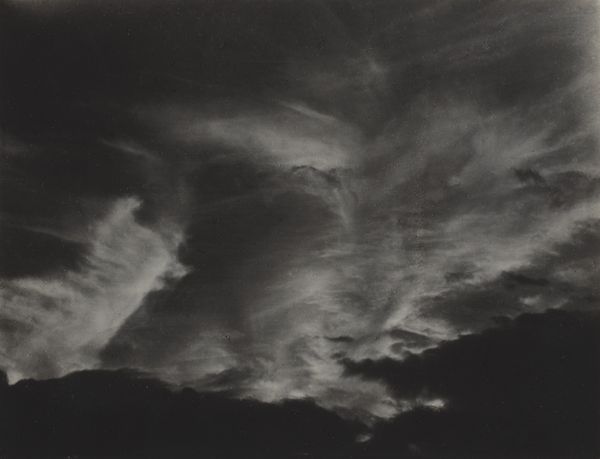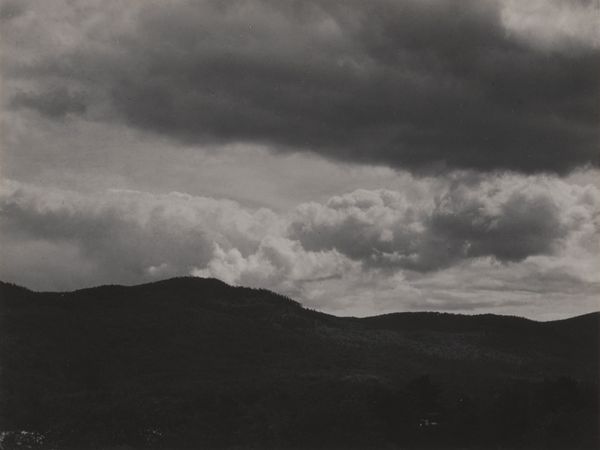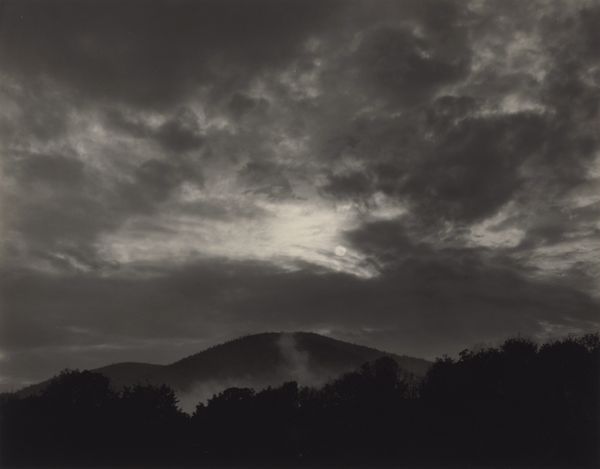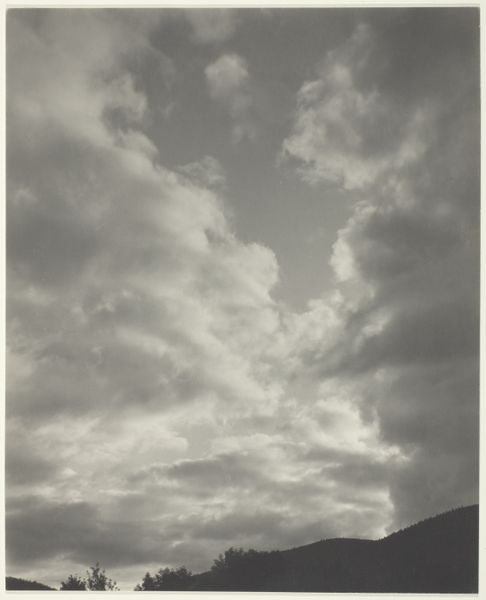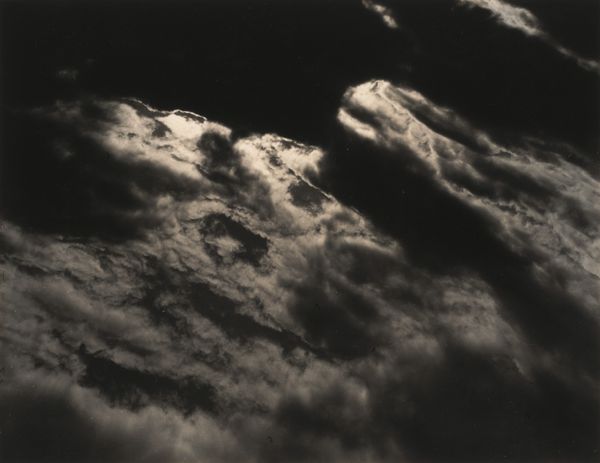
photography, gelatin-silver-print
#
cloudy
#
twilight
#
black and white photography
#
snowscape
#
pictorialism
#
landscape
#
abstract
#
photography
#
low atmospheric-weather contrast
#
gelatin-silver-print
#
monochrome photography
#
gloomy
#
fog
#
modernism
#
mist
#
monochrome
#
shadow overcast
Dimensions: sheet (trimmed to image): 9.4 x 11.9 cm (3 11/16 x 4 11/16 in.) mount: 34.3 x 27.5 cm (13 1/2 x 10 13/16 in.)
Copyright: National Gallery of Art: CC0 1.0
Curator: Alfred Stieglitz’s "Songs of the Sky," created in 1924, is a gelatin-silver print that seems to capture a fleeting moment, almost an exhale, from nature itself. Editor: My first impression is the moodiness. It's a somber sky, very textural with contrasting light and shadow playing across the cloud formations, yet also… peaceful? There’s a curious harmony in the grayscale tones. Curator: The deliberate use of monochrome lends a timeless quality, which was quintessential of the Pictorialist movement Stieglitz championed. But it’s more than that, these photographs broke away from the aesthetic conventions in art photography in order to capture a particular quality. Stieglitz, seeking to validate photography as a high art, began using photographs to capture interior feelings and universal themes, just like painting and music. Editor: Yes, and in this, there’s a stunning arrangement of tones, a gradation from near black at the horizon to shades of grey in the cloud layers. These tones almost dance across the surface, moving away from simply being a landscape, which in turn underscores this gesture toward the pictorial. There’s something profound about the image, as if one could read deep symbolism into each cloud formation, though they may simply be abstract forms, there’s a striking balance here. Curator: I think it is less about reading explicit symbols, but more the intention behind Stieglitz’s project and the period which fostered that work. After World War One, many artists were striving to express interior experiences rather than external realities; art production saw a desire for subjective emotional experience through universal form and theme. Stieglitz and Georgia O’Keeffe saw their photography, especially series like these, as a tool to engage in new and progressive approaches that moved toward abstract symbolisms. Editor: Agreed. Even knowing that context doesn't diminish the strength of the composition for me. This photograph, particularly how the artist has arranged light and dark, is striking as a formal object. Curator: Absolutely. Knowing this helps further frame his intention of raising photography into a means to present the invisible and deeply personal. Editor: It seems to succeed on both fronts, context and composition. Curator: Precisely, it invites you to contemplate both form and the story behind its making.
Comments
No comments
Be the first to comment and join the conversation on the ultimate creative platform.
